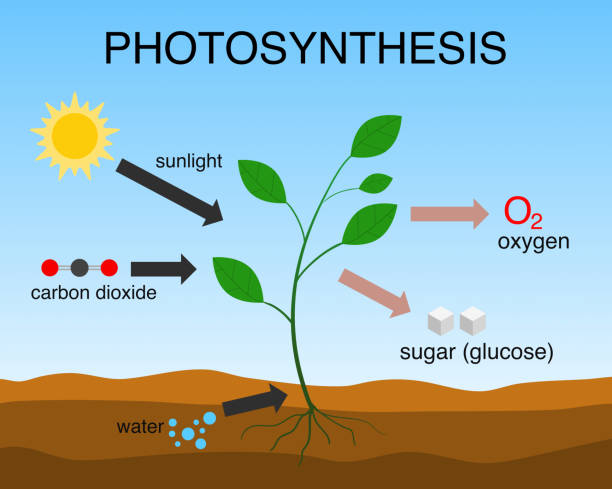On this page, we provide the historical perspective of photosynthesis summary.
Need Help?
[quform id="1" name="Schools Form"]Title: The Historical Perspective of Photosynthesis: A Journey Through Time
Photosynthesis, the process by which green plants, algae, and some bacteria convert light energy, primarily from the Sun, into chemical energy in the form of glucose, is the fundamental basis of life on Earth. The understanding and conceptualization of this complex process, however, is a testament to centuries of scientific inquiry. In this essay, we will embark on an exploration of the historical perspective of photosynthesis.
Table of Contents
The Historical Perspective of Photosynthesis Summary
The Ancients: Early Understanding and Speculations
Ancient civilizations, including the Greeks, Romans, and Egyptians, recognized the necessity of sunlight for plant growth, but the specific process of photosynthesis remained enigmatic. The notion of plants ‘feeding’ on soil was prevalent, but the essential role of light and its interaction with green parts of plants was yet to be identified. The importance of water in plant growth, too, was noted by early philosophers such as Thales of Miletus.
The 17th and 18th Centuries: Gaining Momentum
Jan Baptista van Helmont, a Belgian physician, conducted one of the earliest photosynthesis experiments in the 17th century. He demonstrated that the mass of a growing plant wasn’t sourced primarily from the soil but from water. This challenged the prevailing belief that plants drew all their nourishment from the soil.
In the 18th century, several scientists such as Joseph Priestley, Jan Ingenhousz, and Jean Senebier contributed to a deeper understanding of photosynthesis. Priestley found that plants could “restore” or “purify” air, which was later understood as the release of oxygen during photosynthesis. Ingenhousz demonstrated that this “restoration” occurred only in the presence of sunlight. Senebier, on the other hand, discovered that plants absorbed carbon dioxide during this process.
19th Century: Elucidation of the Photosynthesis Process
Julius Robert Mayer, a German physician and physicist, proposed the law of conservation of energy in the mid-19th century. This was crucial for understanding that sunlight was the source of the energy that plants stored during photosynthesis. Further advancements came from Julius Sachs who confirmed that chlorophyll in the chloroplasts was the site of photosynthesis and that oxygen was a by-product of this process.
Towards the end of the 19th century, T.W Engelmann conducted an experiment using a prism and filamentous algae to demonstrate that the highest rate of oxygen release (and thus photosynthesis) occurred in red and blue light. This formed the foundation of our understanding of the action spectrum of photosynthesis.
20th Century: Molecular Mechanisms and the Calvin Cycle
The 20th century marked a major turning point in the understanding of photosynthesis at a molecular level. Cornelis Van Niel proposed that photosynthesis was a process of addition and removal of hydrogen, influencing the subsequent work of many scientists.
The crowning achievement of the 20th century was the elucidation of the Calvin Cycle by Melvin Calvin and his team in the 1950s. They used the radioactive isotope carbon-14 to track the path of carbon in photosynthesis and uncovered the complete sequence of reactions through which plants manufacture glucose. This won Calvin the 1961 Nobel Prize in Chemistry.
21st Century: Contemporary Research and Future Directions
The 21st century saw advancements in our understanding of photosynthesis at the genetic and molecular level, thanks to emerging techniques in biotechnology and molecular biology. Scientists are now able to manipulate photosynthetic genes and proteins to optimize the efficiency of photosynthesis, leading to implications in sustainable agriculture and renewable energy.
Conclusion: Reflection on the Past, Vision for the Future
The understanding of photosynthesis has been a cumulative effort of many scientists across centuries, beginning from simple observations to sophisticated molecular explorations. The journey of understanding photosynthesis provides an excellent example of how scientific knowledge evolves over time.
Today, as we face unprecedented environmental challenges, photosynthesis has regained the spotlight. Through genetic engineering, scientists are trying to optimize the process to enhance crop yields and devise innovative solutions for carbon sequestration to mitigate the impacts of climate change. Additionally, researchers are exploring artificial photosynthesis to create sustainable energy sources.
As we reflect on the historical perspective of photosynthesis, it’s evident that this natural process, which largely contributes to life as we know it on our planet, will continue to be an important area of study. The future research on photosynthesis will play a critical role in the sustainable development of our world, emphasizing the significance of this process beyond the realms of biology and extending into the domains of agriculture, energy, and environmental science.

